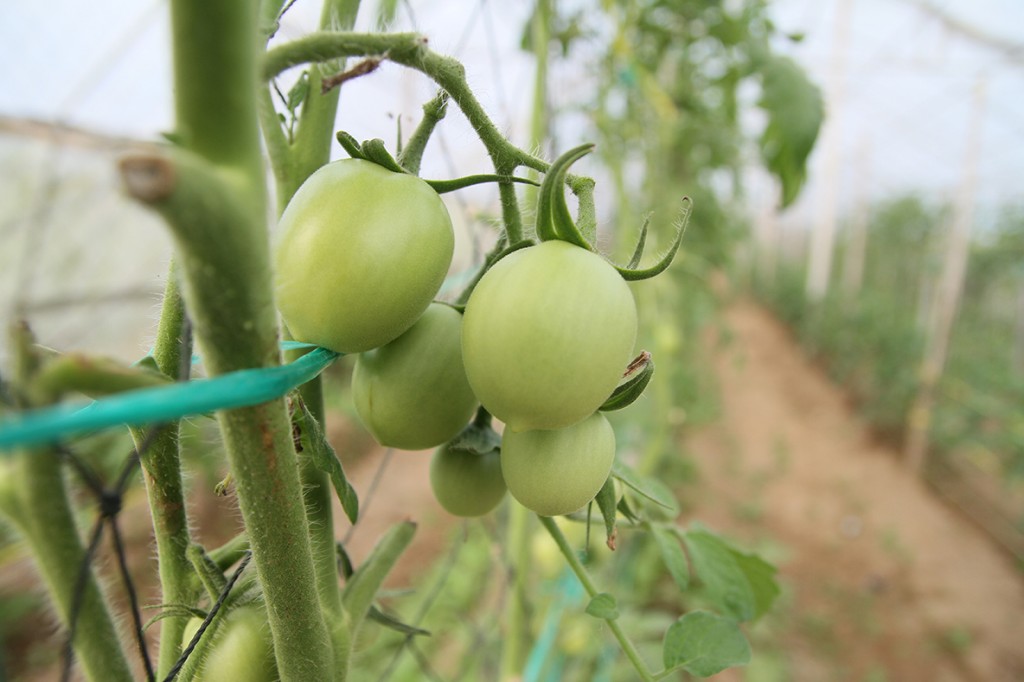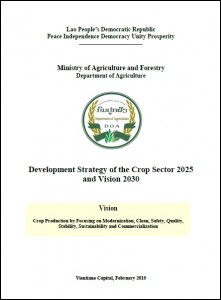In Lao PDR, the population is forecasted to reach 7,5 million and 8.3 million in 2020 and 2025 respectively and these figures do not include tourists who visit the country by 3 million times per year, according to the ‘Development Strategy of the Crop Sector 2015 and Vision 2030’ recently launched by Lao’s Department of Agriculture, Ministry of Agriculture and Forestry.

To support the population growth, countries around the world are requested to increase 60 per cent of the current world food production.
However, according to the ‘Development Strategy of the Crop Sector’ challenges in Lao PDR comprise changes in land use and climate, and low quality of agricultural products and commodities.
In Lao PDR, more land under food and cash crops keeps changing to other crops such as industrial crops and the changes leads to land use conflicts. Changes in crop land will continue until relevant regulations and land tenure are strictly enforced.
Besides, an average amount of rainfall is estimated to increase by 4.2 per cent with more natural calamities such as floods and droughts that result in rice insufficiency and food insecurity, and further result in a delay in planting and lower production in some areas along the Mekong River and its tributaries. It is noted that an increase in temperature (greenhouse gas) will have detrimental effects on crop productivity especially crops that prefer low temperature. It is also noted that the rising temperature is a possible cause for a higher incidence of pests and weeds that leads to more investment and results in a higher food price.

Agricultural products of Lao PDR are seen with low quality. One reason is that the low quality agricultural products in Lao PDR result from a scattered farming, low farm infrastructures and technology, and less quality control and those products will not be traded and exported.
Integrating the Lao economy into the world and regional economies is an important factor that contributes to growth of the agriculture sector and that provides an opportunity for agricultural products of Lao PDR to enter international and regional markets.
At the same period, agricultural products and commodities from other countries will enter Lao PDR and they will share domestic markets. It is, therefore, necessary to improve quality of agricultural products and commodities of Lao PDR to meet regional and international market requirements such as food safety. It is noted that relevant regulations on sanitary and phytosanitary, quality control and certification need to be strictly enforced for meeting the requirements applied by WTO.
Agricultural products and commodities in Lao PDR need to be certified for quality and food safety, and thus quality certification and control for organic agriculture (OA), Good Agriculture Practice (GAP) and other forms of farming are key measures for exporting commodities. In this connection, the crop sector in Lao PDR needs to formulate and develop policies and regulations for improving farming practices that ensures food safety and acceptable quality.
 The Lao’s ‘Development Strategy of the Crop Sector 2025’ is one of the strategic documents, which include an analysis of crop production and development of the crop sector which has been carried out recently. The strategy contains vision, objectives and goals for development of the crop sector in Lao PDR until 2025.
The Lao’s ‘Development Strategy of the Crop Sector 2025’ is one of the strategic documents, which include an analysis of crop production and development of the crop sector which has been carried out recently. The strategy contains vision, objectives and goals for development of the crop sector in Lao PDR until 2025.
The ‘Development Strategy’ is formulated with an aim of providing a policy reference for short, medium and long term development planning and for implementation of the Lao government’s policies, laws, regulations, national socio-economic development plans, and regional and international integration. A focus has been given to production of food and cash crops that is safe for producers, consumers and the environment, development for technical capacity, plant protection and plant quarantine, establishment of standards, regulations and information systems that can be integrated internationally and regionally. Focus has also been given to allocation of land areas for cultivation of food crops and cash crops by being based on the local conditions such as natural resources, cultures and local knowledge. A further focus has been given to sustainable management of farming systems, resources and water resources, and allocation of agriculture land in the whole country.
Read the full ‘Development Strategy of the Crop Sector 2015 and Vision 2030’ at